Architects & Firms
In aptly named Orange County, California, the citrus industry boomed between the 1880s and late 1940s. Groves of Valencia oranges, the predominant variety, eventually covered more than 67,000 acres, and, at the peak of this “gold rush,” at least 60 major packing houses crated and shipped produce for local growers. Among them, the Santiago Orange Growers Association in the town of Orange—a 1918 facility, strategically sited by citrus magnate C.C. Chapman along the railroad tracks—became one of the highest-volume fruit packers in the nation, handling as much as 60 million pounds of oranges in a single year. But the industry shifted after World War II, as migration to Southern California spurred rising real-estate values in Orange County, where housing tracts gradually supplanted groves, prompting some growers and packers to relocate to other counties. By 2004, when Chapman University purchased the former Santiago plant from its second owner, it was Orange County’s sole surviving citrus-packing plant. The historic warehouse did, however, gain state and national landmark designations, and Chapman University—renamed in 1934 for its lead benefactor, C.C. Chapman, the “California Orange King”—was committed to celebrating that legacy. But several years would pass before the university, focused on other expansion projects, would implement an adaptive-reuse plan. Finally, in early 2021, Los Angeles–based Lorcan O’Herlihy Architects (LOHA) won the commission to transform major sections of the interior (along with seismic, acoustic, and foundation upgrades, plus light exterior restoration). In January, the old packing house was reborn as the Sandi Simon Center for Dance, a three-level, 33,400-square-foot study-and-performance venue.
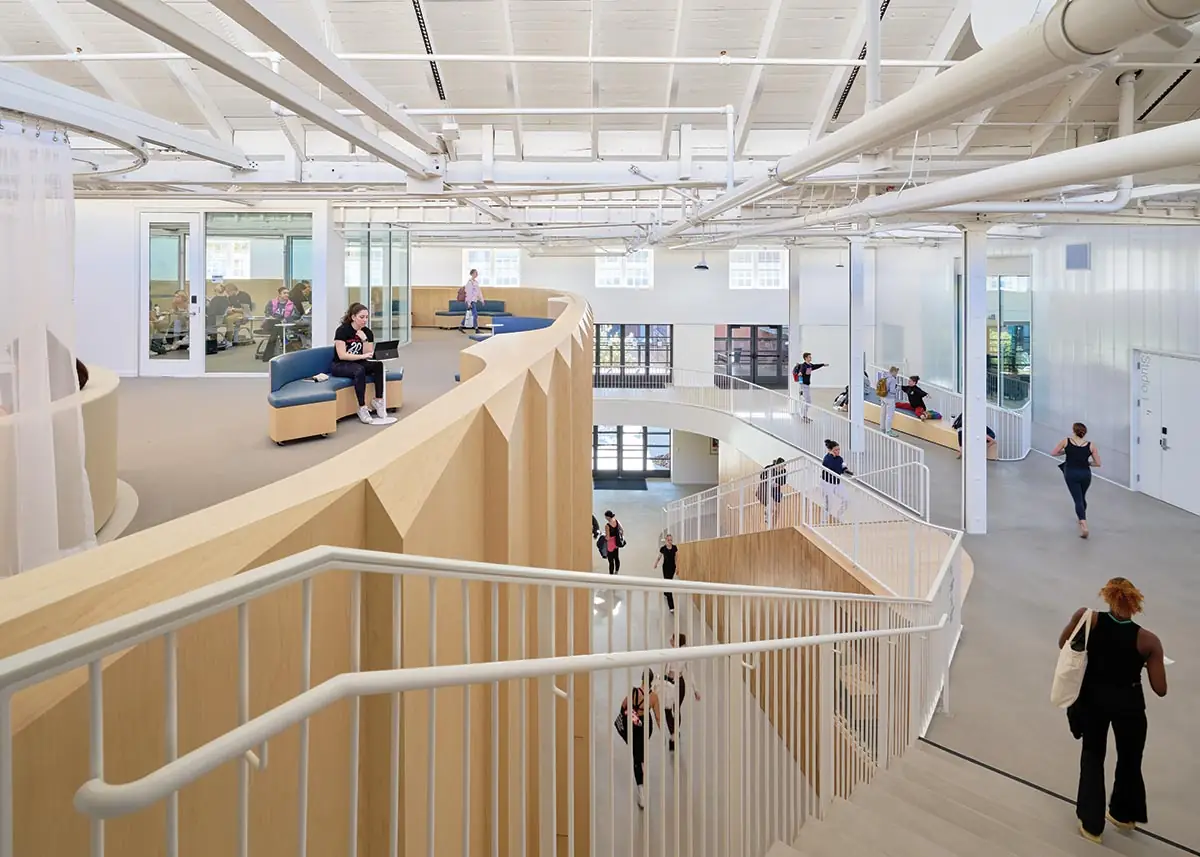
A dynamic sense of motion permeates the entire structure. Photo © Eric Staudenmaier, click to enlarge.
Above a heavy timber post-and-beam structure, the former warehouse rises to its original sawtooth roof with operable north-facing clerestory windows. Outside, the industrial canopy that once shaded active loading docks runs the length of the south elevation—and the newly repainted word “Sunkist,” in the brand’s jaunty shadow font, adorns the pale stucco exterior. (At some point, possibly by 1945, this packing house joined the Sunkist cooperative—and the city later stipulated that the word remain.) The high-ceilinged 57,650-square-foot plant, which included some additions to the 1918 version, rose one story above a dark, dank basement, formerly nicknamed “the dungeon”—untapped potential that became central to LOHA’s strategy.
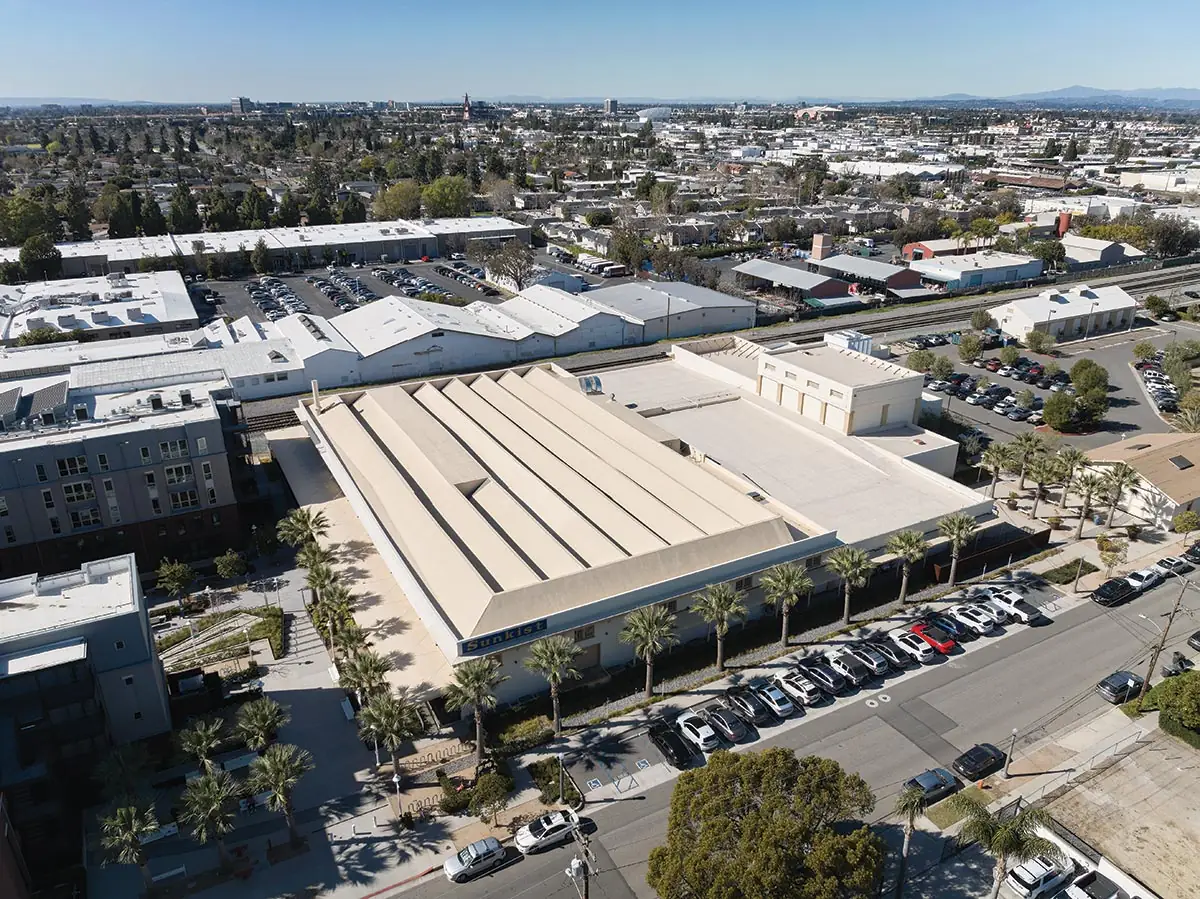
1
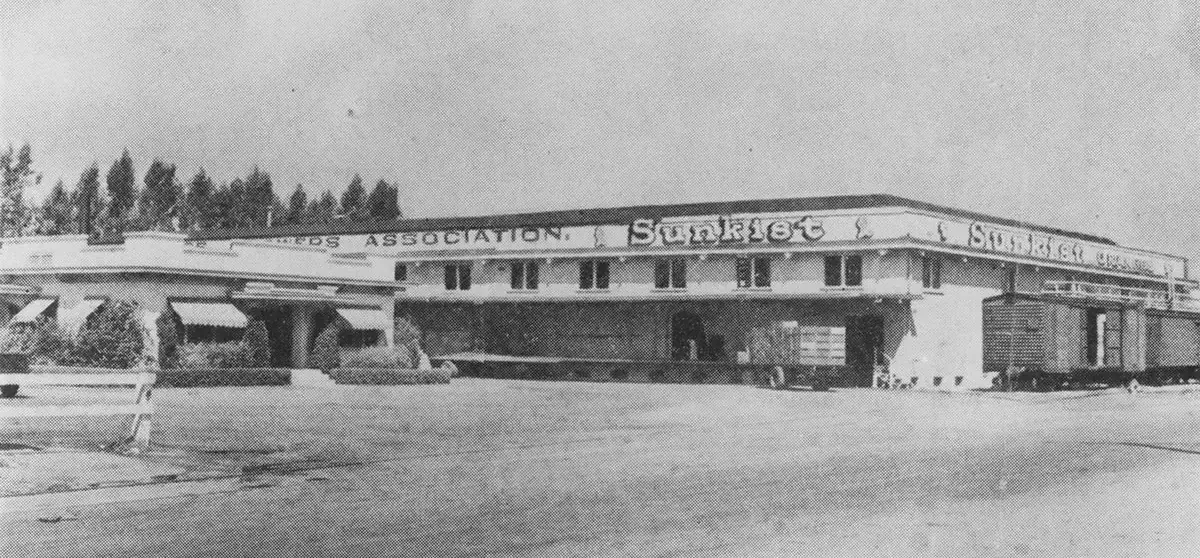
2
The 1918 facility was strategically sited along railroad tracks (1) and became one of the highest-volume fruit packers in the nation in its heyday (2). Photos © Eric Staudenmaier, courtesy Orange Public Library and History Center
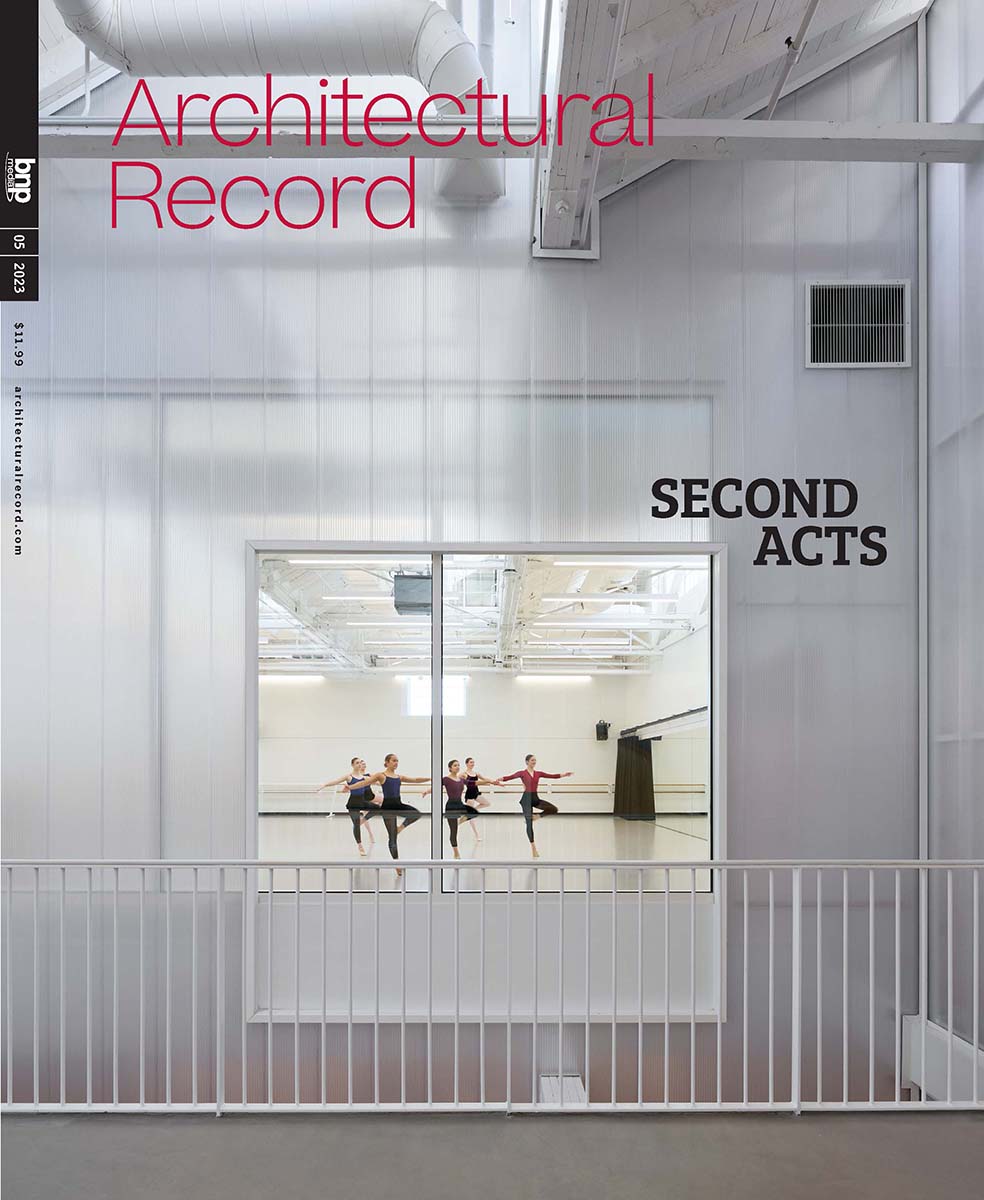
Photo © Eric Staudenmaier
Bringing daylight and a dynamic sense of motion through the entire structure, the architects carved out the center of the original workspace floor, opening up a large light well and dropping the entry level one story to the former basement. There, LOHA inserted an object-like 2,900-square-foot performance-and-rehearsal space that soars 16 feet. Nearby, another volume—also curvy and freestanding—houses faculty offices and a small box office. Alongside it, a broad stairway ascends to catwalk-like circulation, obliquely stitching together the open edges of the upper floor and a new mezzanine, or loft, atop the double-height performance space. A third free-form pod on the new entry level encloses a lounge/meeting room. Together, the three curvilinear volumes play against one another like dancers shaping the space between them, some of it tall and narrow. Five airy (and orthogonal) dance studios, along the periphery, form a contrasting backdrop to this architectural tango. The program also includes two classrooms, a training room, plus casual breakout areas. Whereas the dance center fills the building’s western two-thirds at the former packing level, it occupies only the middle bays of the existing basement.
The conversion of a subterranean realm into a welcoming entry floor benefited from an existing plaza beside it, sunken a full story below street level and connected to it via stairs and ramps. (The university built it in 2019 to allow plaza-side dorms to rise an extra story without exceeding the above-grade height cap.) There, on the building’s south face, LOHA ushered in daylight through multiple glass entrance doors—though the most even illumination comes through the sawtooth roof. Letting rays and sight lines penetrate the entire place, the architects used translucent, channeled polycarbonate sheeting for many partition walls and cut interior storefront windows, or viewing apertures, into the studios.
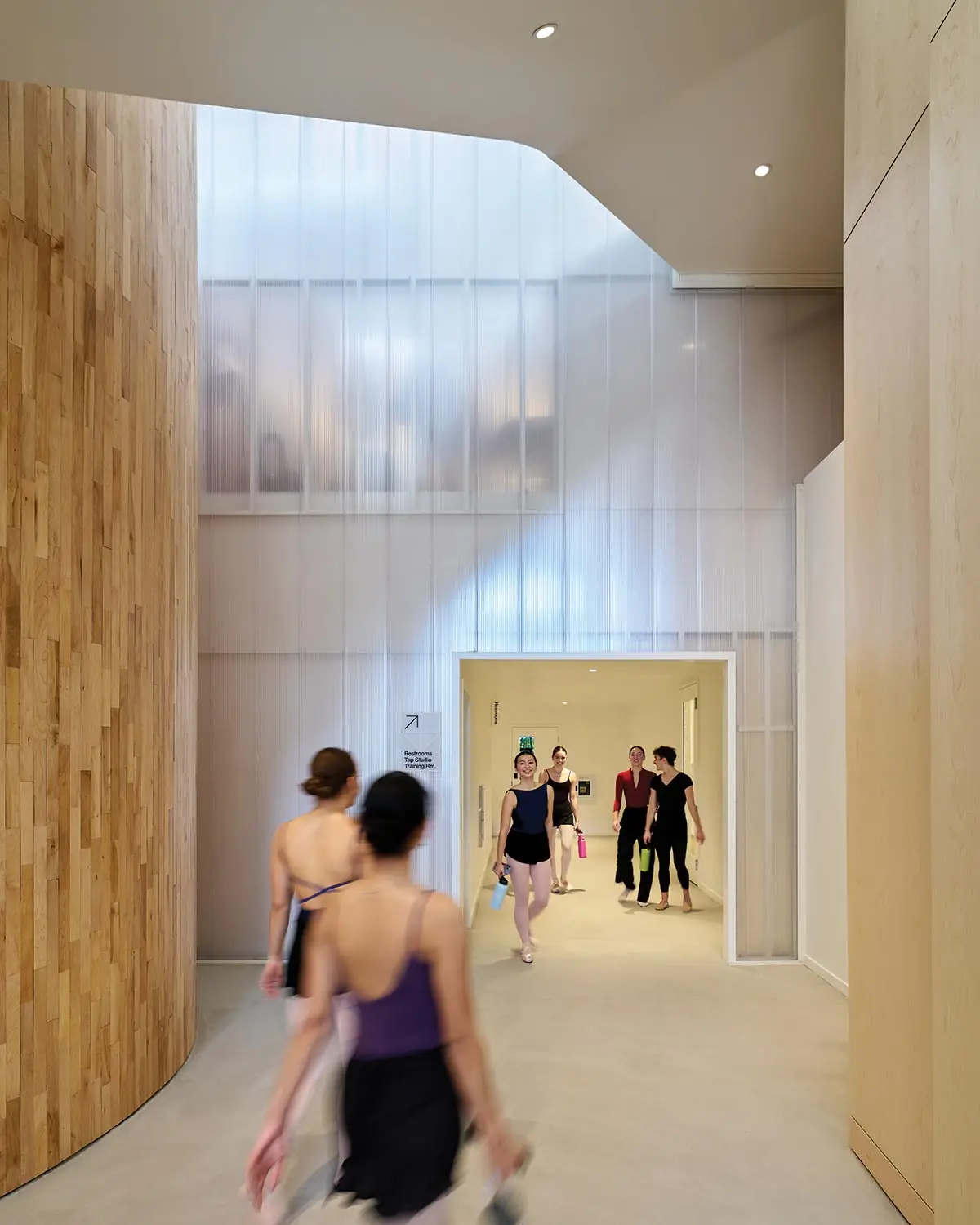
Maple floorboards from the original factory floor were repurposed on the interior as vertical cladding. Photo © Eric Staudenmaier
The design also lets users experience the vintage warehouse in newly revealing ways, bringing everyone dramatically closer to the sawtooth. “We simply painted it white,” says LOHA founding principal Lorcan O’Herlihy, “allowing the rawness of the original details to read through.” Underfoot, most circulation areas have existing concrete floors, now micro-topped, whereas dance spaces have sprung floors with Marley-type vinyl surfacing (except for the tap-dancing studio, which has the classic wood). LOHA salvaged the original maple planks from the cut-out packing-room floor, repurposing them as historically evocative vertical cladding around the office volume and main stairway. But all the new millwork—for sculptural hang-out areas, as well as the performance space’s shell—is pale virgin maple, finished with sleekness and precision, simultaneously resonating and contrasting with the reclaimed work-worn hardwood. And playfully echoing the jagged roof, the performance volume’s cladding has a vertical sawtooth profile that follows its curving form like the teeth of a circular saw blade.
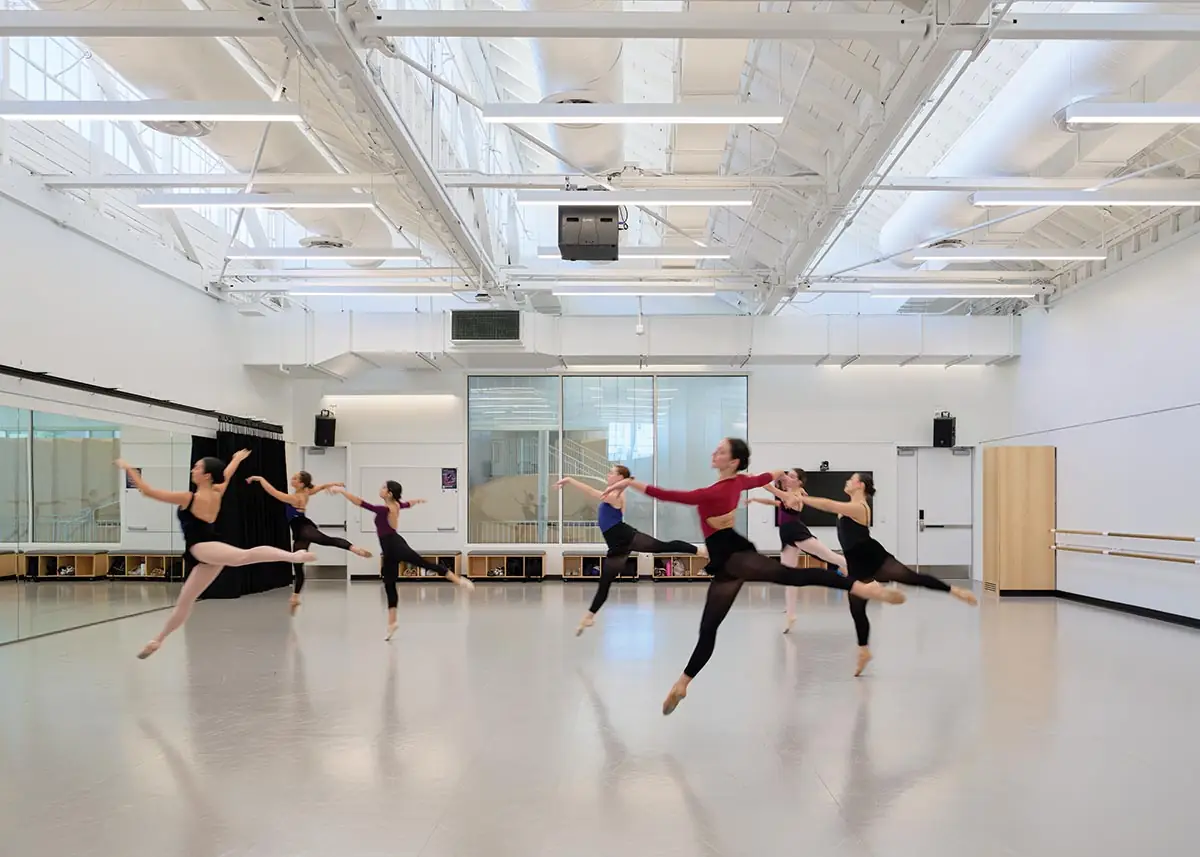
Dance spaces have sprung floors with vinyl surfacing. Photo © Eric Staudenmaier
In the spirit of citrus packing (and dance studies), these hardworking interiors have retained some of their industrial character, although the original shell and roof, now reinforced with steel rods and struts, are primarily what remain. With LOHA’s recent work occupying only about 57 percent of the building, more change is coming: arts spaces of yet undetermined program and design will eventually flank the dance hub, all under the same roof.

3
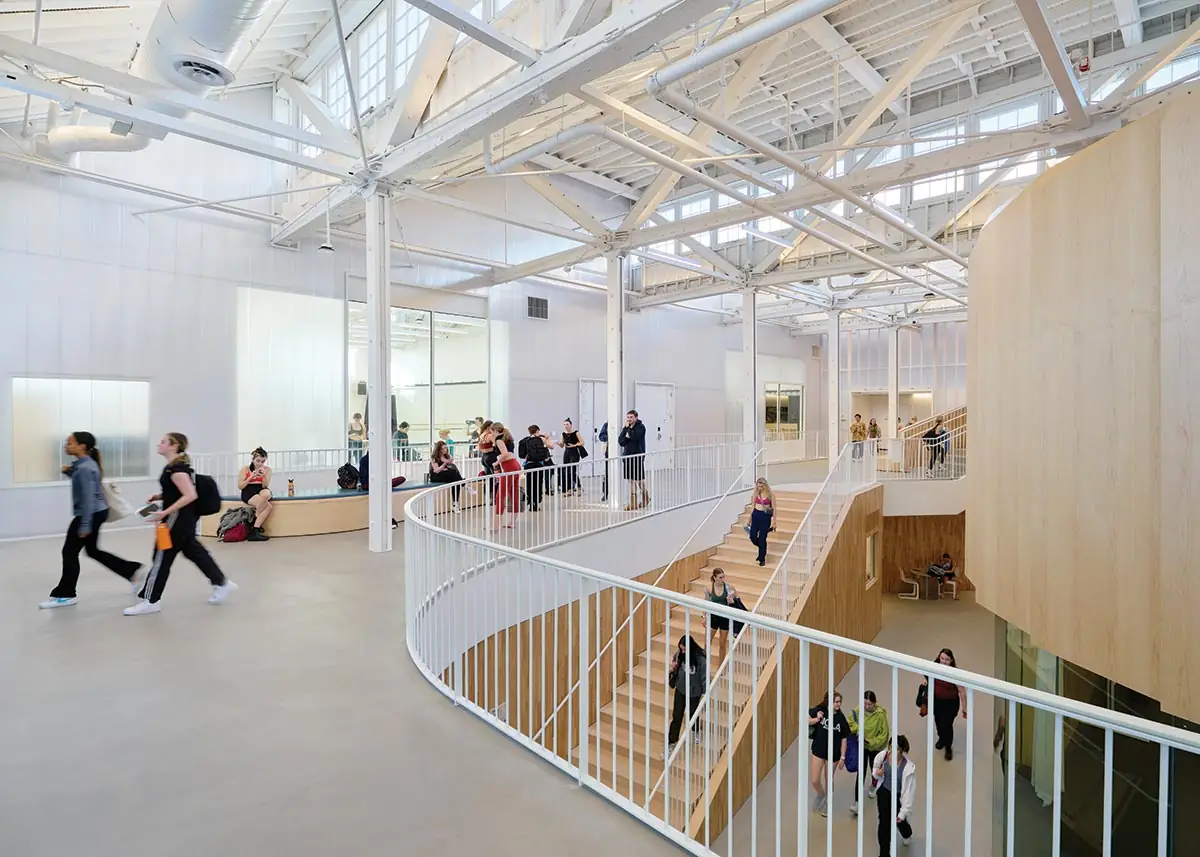
4
Views into the studios invite students to learn, even casually, from watching others in class (3 & 4). Photos © Eric Staudenmaier
“This project is an essential anchor for the arts corridor we envision here,” says Colette Creppell, vice president of campus planning and design. “Nearby, Chapman already has its Dodge College of Film & Media Arts and the soon-to-be-expanded Hilbert Museum of California Art. It’s all still evolving.”
Meanwhile, on the dance center’s opening day, Creppell recalls, “Swarms of students came flying and dancing in—it was a moment of sheer joy!” Ever since, they’ve been pirouetting and leaping through the great spaces where oranges once rolled.
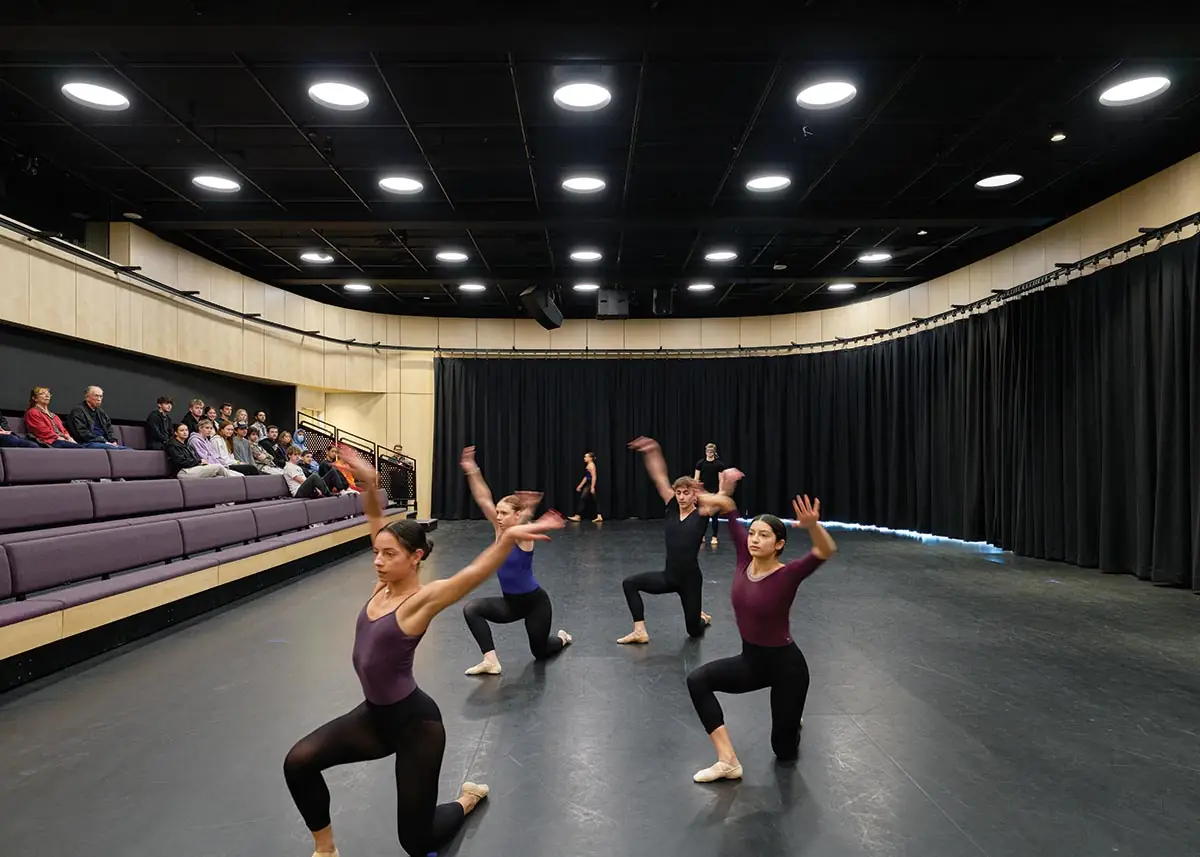
Inside the performance/rehearsal space, mirrors slide aside, permitting retractable bleacher seating to descend. Photo © Eric Staudenmaier
Click plans to enlarge
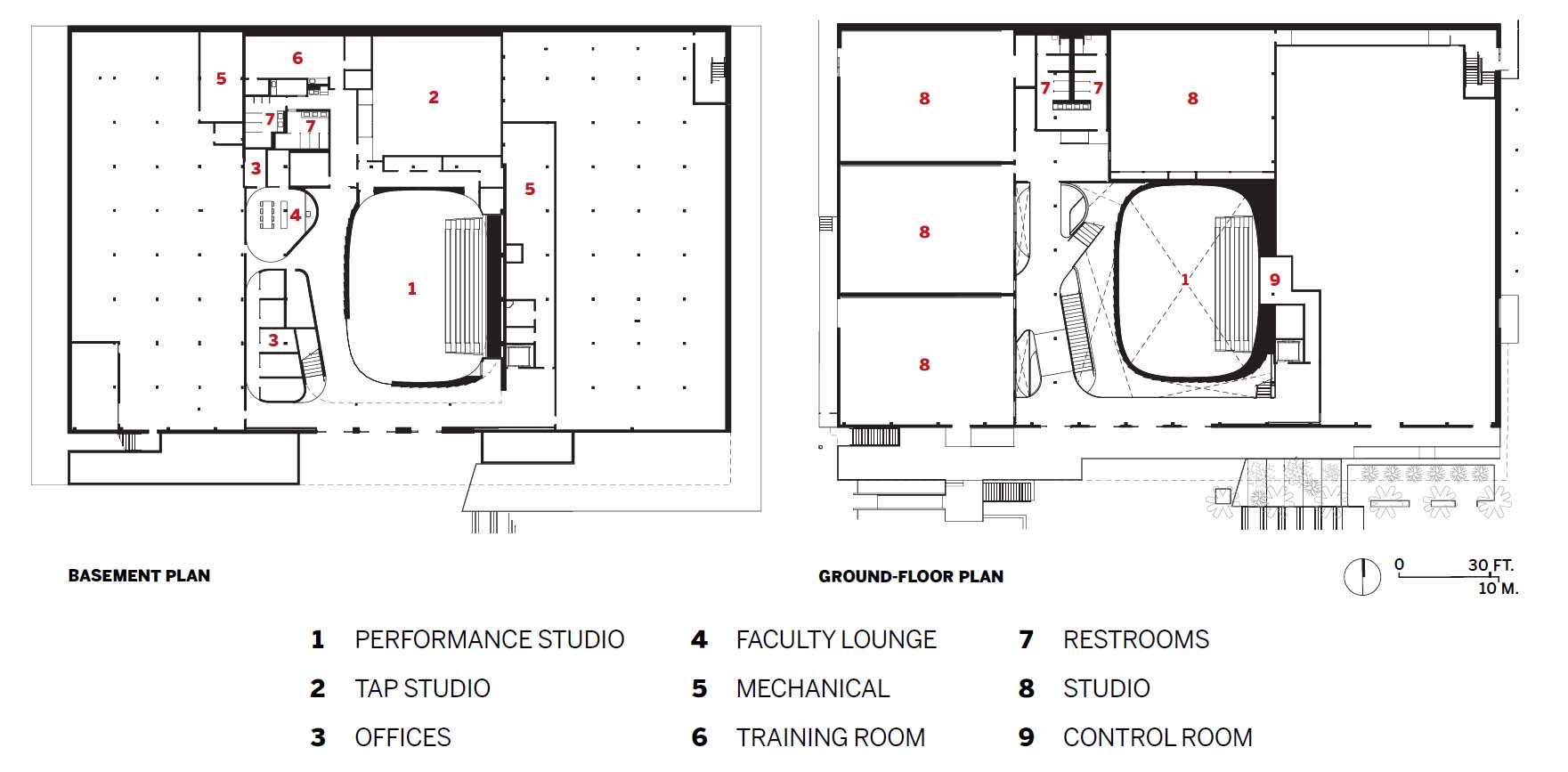
Credits
Architect:
Lorcan O’Herlihy Architects — Lorcan O’Herlihy, principal in charge; Ghazal Khezri, project director; Ian Dickenson, principal; Joe Tarr, Abel Garcia, project leads; Morgan Starkey, Kathryn Sonnabend, project team; Kevin Murray, Wentao Guo, project assistants
Engineers:
Structural Focus (structural); Buro Happold (m/e/p); KPFF (civil)
General Contractor:
R.D. Olson
Interior Designer:
Dotrio
Consultants:
Veneklasen Associates (acoustics); IN-FO.CO (signage); Historic Resources Group (historic); Auerbach Pollock (theatre consultant) Friedlander; Auerbach Glasow and HLB (architectural lighting)
Client:
Chapman University
Size:
33,400 square feet
Cost:
Withheld
Completion Date:
January 2023
Sources
Windows:
Arcadia
Theatrical Drapery:
Rosebrand
Paints and Stains:
Dunn Edwards
Interior Finishes:
Arktura (acoustic wall tile); Capri (rubber-cork floor tiles); Tarkett (carpet); Westcoat (concrete microtopping); Extech (polycarbonate panels)


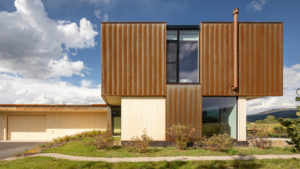
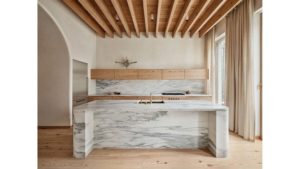
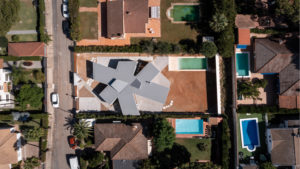
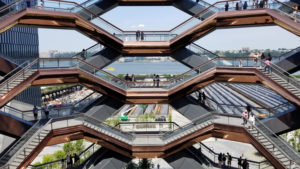
Post a comment to this article
Report Abusive Comment